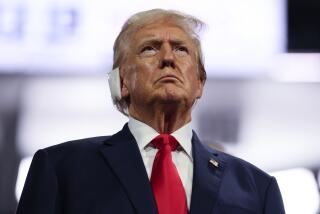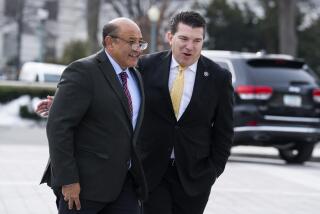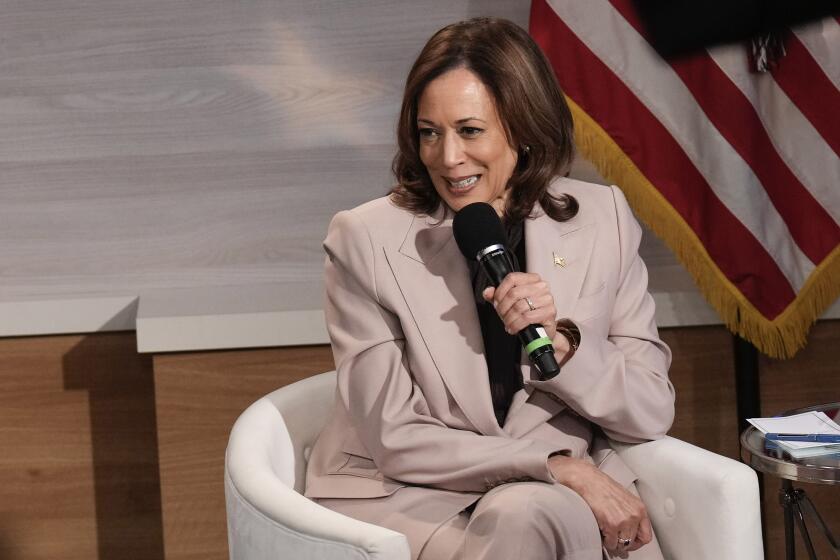Congress strains to seek decorum for president’s State of the Union
On the eve of President Obama’s State of the Union, civility is en vogue in Washington and no one wants to be caught not minding their manners — especially after two recent joint sessions of Congress yielded memorable breaches of decorum.
In advance of last week’s vote to repeal the healthcare overhaul, House Republican leaders signaled that the rhetoric should be taken down a notch. Democrats, meanwhile, made a show of offering to sit side-by-side with Republicans at Tuesday night’s address.
But even as they smiled graciously, both sides revealed the limited powers of civility and the politics behind politeness. In deference to a political mood subdued by the assassination attempt on Rep. Gabrielle Giffords (D-Ariz.), the tone of the debate last week over repealing the new healthcare law was relatively mild, though neither side inched any closer to common ground.
And while gestures of bipartisanship — such as the calls for lawmakers of different parties to break protocol and sit together for the speech — proved popular in some corners, they were seen as political gamesmanship by others.
“Democrats could not have cared less about civility and bipartisanship during the lame-duck session when they controlled both houses. Now that Republicans have Congress, and they need Republicans, it’s let’s all sing ‘Kumbaya’ together,” said Chris Wilson, a Republican strategist.
Indeed, Democrats have been quicker to embrace the idea of a new seating arrangement, first suggested by Sen. Mark Udall (D-Colo.) and a centrist Democratic group called Third Way.
Nearly 60 members of the House and Senate, most of them Democrats, have signed on to a letter endorsing the mixed seating plan, and many others have announced their plans to pair up. The disparity has some Republicans in demand. Moderate Sen. Susan Collins (R-Maine), has agreed to sit with Democrats.
The arrangement threatens to upend the now predictable choreography of the televised address in the House chamber. With Republicans seated on the right and Democrats on the left, the clear divide provides a compelling visual of the power dynamic in Congress, particularly as one side stays planted firmly in the seats as the other bounces up for a standing ovation.
Obama will look out Tuesday at nearly 100 newly elected Republican members — an electoral accomplishment some Republicans looked forward to showing off.
House Speaker John Boehner (R-Ohio), who as a matter of convention has an assigned seat on the dais, has said members are free to sit wherever they want. Other House leaders appeared to endorse the idea but remained noncommittal about their specific plans.
As support for the idea grew, aides took on the role of social secretaries, fretting about the logistical hassle of making sure their bosses weren’t left without a date.
Several freshman Republican members in the House declined to comment on where they would sit, as their aides suggested the notion was mere symbolism.
That is the point, said some advocates of the idea.
“On a political stage as important as the State of the Union address, symbolism has a real impact,” said Sen. Mark Steven Kirk (R-Ill.), who will be sitting with Illinois Democrat Sen. Richard J. Durbin. “Over time, it should have an impact that lasts more than one night.”
Rep. Joe Wilson knows the power of such a stage. The Republican from South Carolina became a national figure — and a fundraising tool for the left and right — after he shouted “You lie!” as the president addressed a joint session of Congress in 2009.
During last year’s address, Supreme Court Justice Samuel A. Alito Jr. was seen on camera mouthing the words “Not true,” while Democrats cheered Obama’s critique of a court decision involving campaign financing.
Republicans have identified another drawback of the annual address: constant cheering by members of the president’s party. But a pep rally is exactly what some viewers want from the primetime political theater, which is one reason the new seating proposal hasn’t won over everybody.
“The State of the Union is a chance for Americans to see what Republicans are standing up for and what Democrats are for, and you can see where the year is going, where the fight will be,” said Colen Lindell, a conservative “tea party” activist in South Carolina. “If everyone is sitting together, you lose that aspect. I know people are trying to be as sensitive as possible and it did get crazy when the healthcare law was passed, with yelling and shouting. But that’s democracy.”
Few expect the careful deference to civility to last long, particularly as the new Congress takes up contentious debates. (Already, Democratic Rep. Steve Cohen of Tennessee has apologized for appearing to equate Republican opposition to the Democratic healthcare law with Nazi propaganda.)
Republicans have many campaign promises to fill before the next presidential election. Democrats will begin the fight to thwart them. So House Majority Leader Eric Cantor (R-Va.) didn’t hold back a dig at a frequent GOP target, Minority Leader Nancy Pelosi (D-San Francisco).
“I would love to have the opportunity for her to engage in some type of working relationship,” he told reporters. “But thus far it seems that she is continuing to drive an ideological agenda, just the same as she did over the last four years.”
Pelosi spokesman Drew Hammill disputed the claim, saying Pelosi meets often with Boehner.
On Friday, Pelosi noted that bipartisan seating wasn’t as novel as some thought. As House speaker at the end of the George W. Bush administration, she often sat next to one prominent Republican during the annual speech.
“I have been sitting next to Vice President [Dick] Cheney for a long time — I want the record to show,” she said.
kathleen.hennessey@latimes.com
More to Read
Get the L.A. Times Politics newsletter
Deeply reported insights into legislation, politics and policy from Sacramento, Washington and beyond. In your inbox three times per week.
You may occasionally receive promotional content from the Los Angeles Times.











